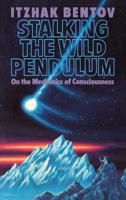Publisher's Synopsis
At its simplest level, "creativity" means creating something that didn't exist before. In this sense, cooking dinner is an example of creativity. Then we evaluate the result of our work, so the "new" thing should have value for us. From that moment on, we can talk about artistic creation, because the creation of an artist is something new and valuable.
At the same time, we clarify that the product of creativity should not be "obvious" or "easy". He must have some kind of uniqueness, a rare merit, achievable only by exceptional efforts. When we start to introduce the concept of "unexpected ness "and" change ", we get one more point of view on creativity.
There are artists who belong to the category of "prolific stylists". Such masters have developed their own style of perception and expression. Both can be of high value. They work within their own style. Since no work repeats the previous one, each of them has novelty and value. Therefore, we rightly call this artist a creative person. But the element of change is missing.
It seems to me that the original word "creativity" describes a wide range of different skills. In this book, I am not going to touch on artistic creation. More than once I have heard from writers, composers, poets and rock musicians that they sometimes use my method of thinking outside the box. It's always good to hear, but my goal is not to enhance the creativity of a narrow circle of people in the arts. My subject is the creative skills required to change concepts and perceptions. You can treat creativity like a secret. An amazing idea is being born before our eyes, and we cannot understand how it happens. It is possible to study and analyze the behavior of creative people, but this will not bring us much closer to the solution, because often such people themselves are not aware of how their "mechanics" work.










